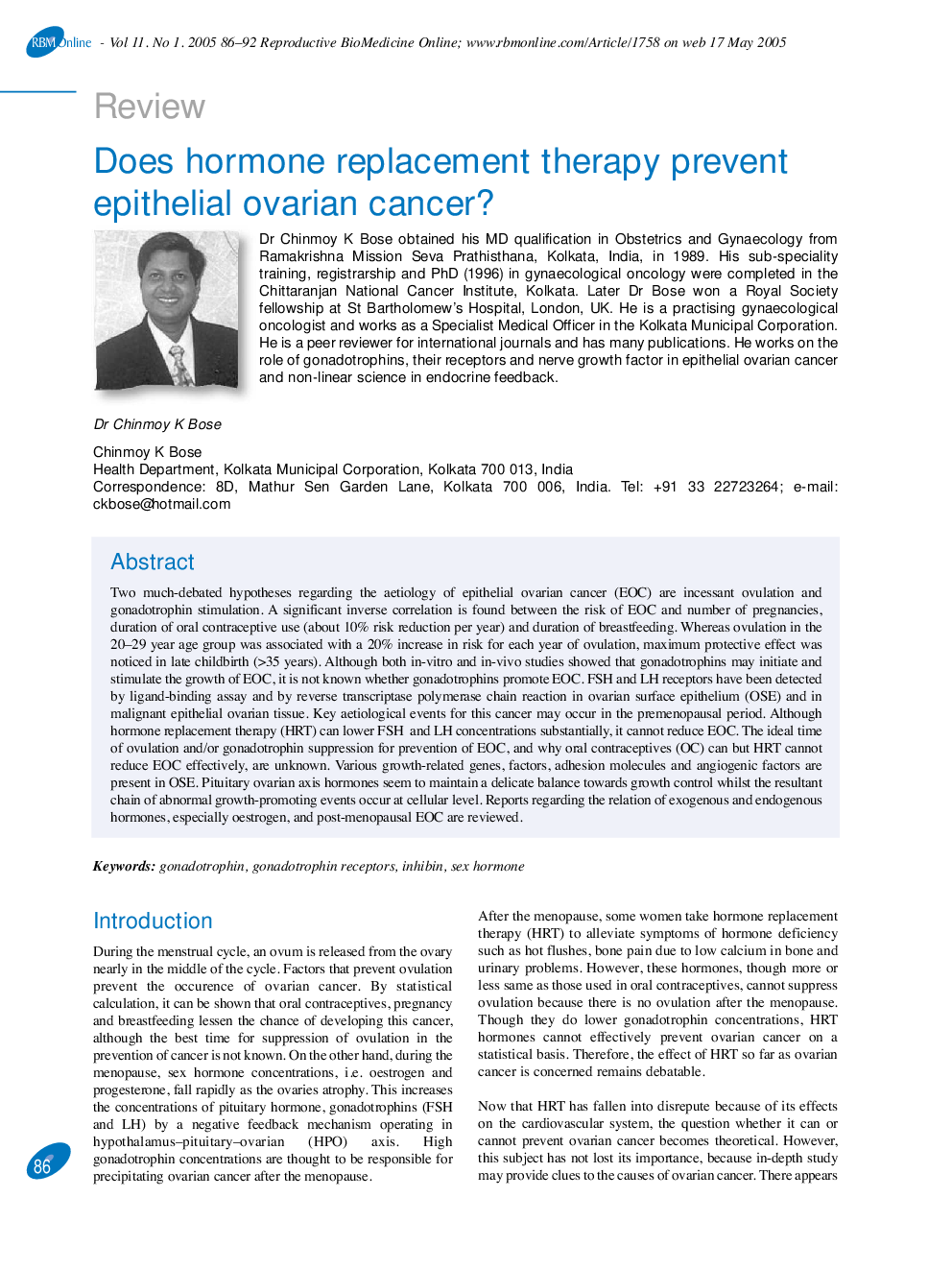| Article ID | Journal | Published Year | Pages | File Type |
|---|---|---|---|---|
| 9335296 | Reproductive BioMedicine Online | 2005 | 7 Pages |
Abstract
Two much-debated hypotheses regarding the aetiology of epithelial ovarian cancer (EOC) are incessant ovulation and gonadotrophin stimulation. A significant inverse correlation is found between the risk of EOC and number of pregnancies, duration of oral contraceptive use (about 10% risk reduction per year) and duration of breastfeeding. Whereas ovulation in the 20-29 year age group was associated with a 20% increase in risk for each year of ovulation, maximum protective effect was noticed in late childbirth (>35 years). Although both in-vitro and in-vivo studies showed that gonadotrophins may initiate and stimulate the growth of EOC, it is not known whether gonadotrophins promote EOC. FSH and LH receptors have been detected by ligand-binding assay and by reverse transcriptase polymerase chain reaction in ovarian surface epithelium (OSE) and in malignant epithelial ovarian tissue. Key aetiological events for this cancer may occur in the premenopausal period. Although hormone replacement therapy (HRT) can lower FSH and LH concentrations substantially, it cannot reduce EOC. The ideal time of ovulation and/or gonadotrophin suppression for prevention of EOC, and why oral contraceptives (OC) can but HRT cannot reduce EOC effectively, are unknown. Various growth-related genes, factors, adhesion molecules and angiogenic factors are present in OSE. Pituitary ovarian axis hormones seem to maintain a delicate balance towards growth control whilst the resultant chain of abnormal growth-promoting events occur at cellular level. Reports regarding the relation of exogenous and endogenous hormones, especially oestrogen, and post-menopausal EOC are reviewed.
Related Topics
Health Sciences
Medicine and Dentistry
Obstetrics, Gynecology and Women's Health
Authors
Chinmoy K Bose,
